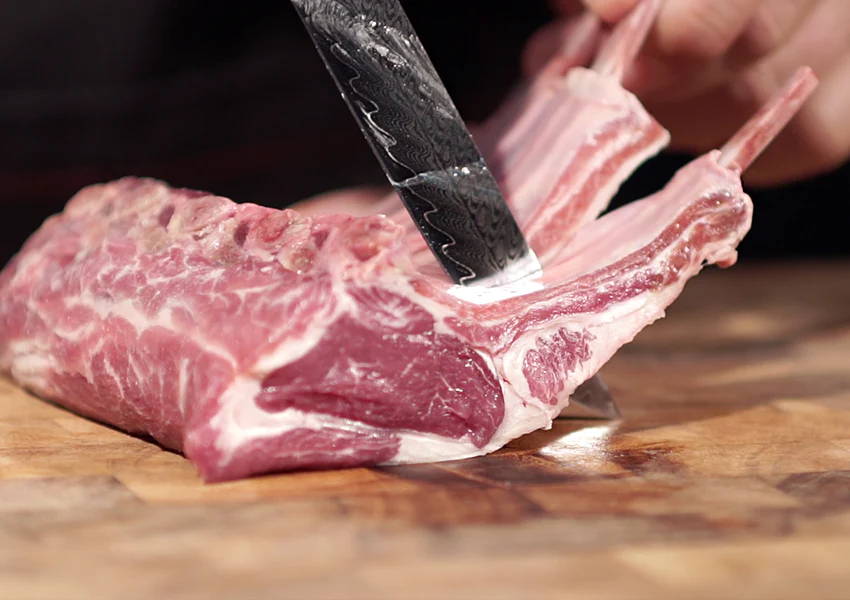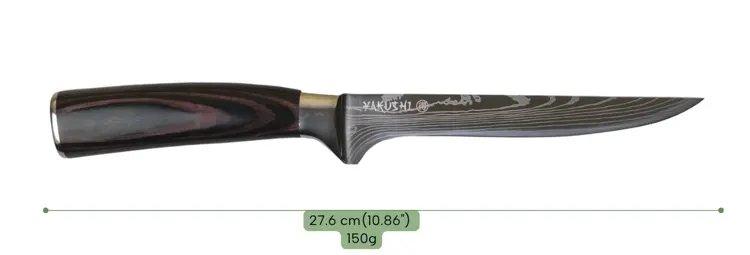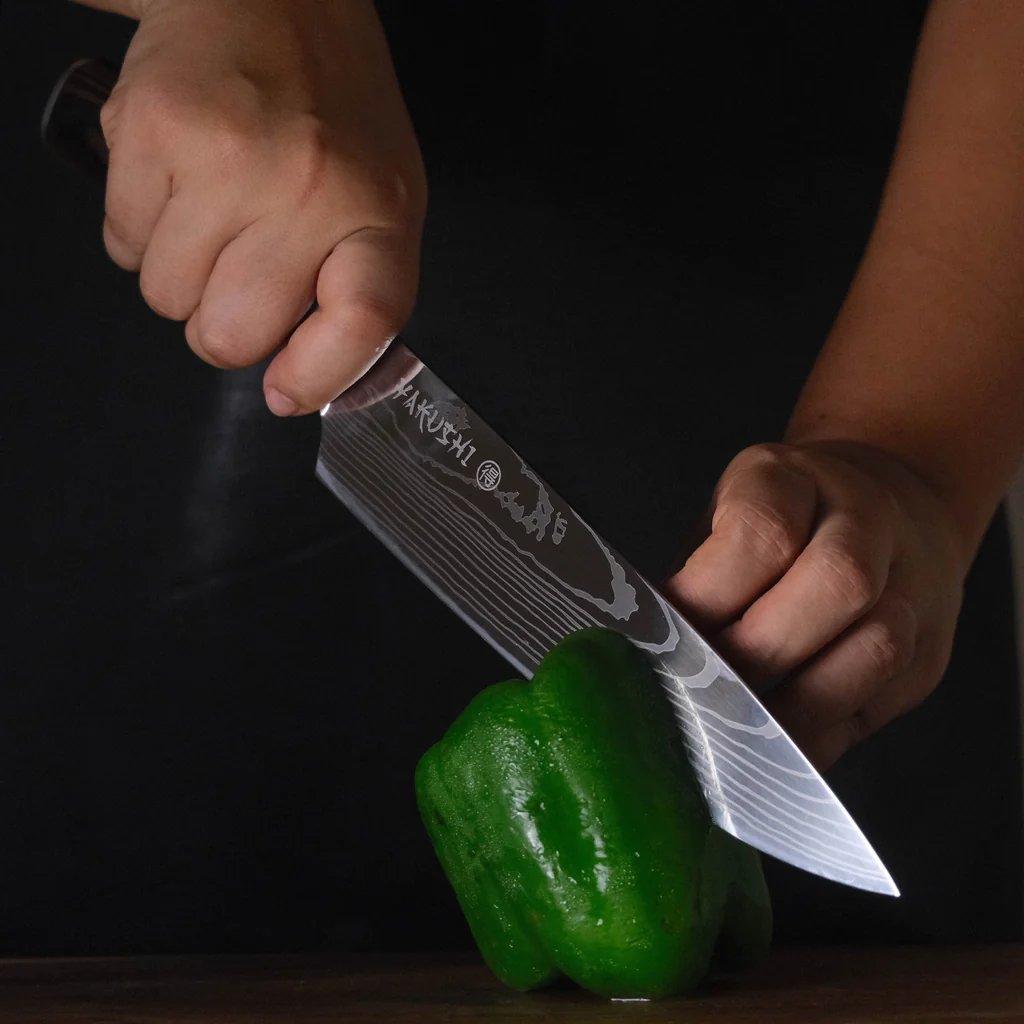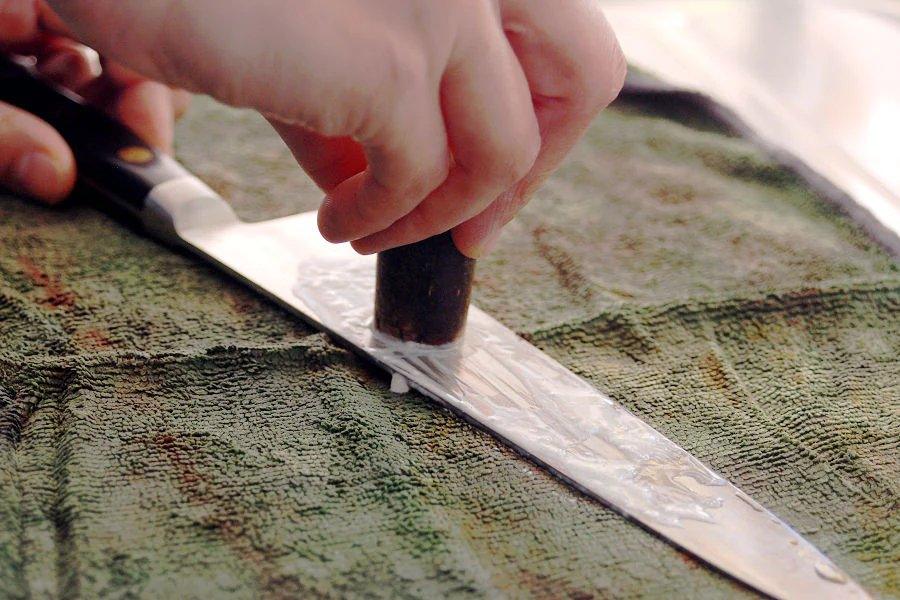Why Use Boning Knives and
How To Use Them Correctly?
Understanding Boning Knives

- They have narrow blades this special shape helps you work with meat more carefully.
- Some knives are stiff, which means their blades don't bend easily. These are good for taking bones out of beef and pork.
- If you're working with poultry, like chicken or fish, there are very flexible boning knives that move around the curves and corners.
- These knives usually range from 12cm to 17cm (5 to 6 ½ inches) in length.
- They have a straight edge that's not all jagged like a saw.
- The edge of the blade is flat but with a little curve that goes up to a point. That point is really sharp and helps you do precise cutting.
- At the bottom of the handle, you'll find a small guard. This guard keeps your fingers safe by making sure they don't accidentally touch the sharp part of the blade.
Advantages of Using Boning Knives
1. Precision in Bone Removal:
2. Minimal Meat Loss:
3. Versatility in use-case:
4. No more strains:
How to Use Boning Knives Correctly

1. Holding the Knife Properly:
2. Safely Wielding the Knife:
3. Making Precise Cuts:
Care and Maintenance of Boning Knives
1. Handwash your boning knives:
Always wash your boning knife by hand, using mild dish soap and warm water. Avoid harsh abrasives or scouring pads that can damage the blade's surface. Gently clean the blade and handle, and don't forget to clean the area near the handle, where dirt can accumulate.
2. Steer clear of harmful chemicals:
You may come across suggestions to use chemicals like WD-40 or mineral oil to clean your Knives. However, you should not be using chemical solutions on items you intend to use for cooking. These chemicals, like WD-40 or others, might work well for removing rust from metals but are toxic.
3. Air dry knives:
Air dry your knives thoroughly. Make sure they are not moist when you are storing them; this could potentially give rise to mold growth.
4. Store your knives properly:
Store your boning knife separately from other utensils and knives to prevent blade damage. Consider using a knife holder, wall-mounted magnetic strip, or blade guard to keep it safe. Avoid tossing it into drawers or containers where it might bump against other objects.
Choosing the Right Boning Knife
Here's what to consider while choosing a boning knife for yourself:
1. Type of boning knife:
Boning knives come in 2 types, stiff and flexible. A stiff knife is suitable for robust bones like pork or beef. It's versatile for various tasks, from chopping to delicate pie preparations. On the other hand, flexible boning knives with softer steel cores are ideal for intricate deboning, such as tenderloin or seafood.
2. Blade length and shape:
The length of a boning knife's blade ranges from 5 to 7 inches. Longer, straight blades help in removing larger meat portions, while slimmer, curved blades offer precision, making them popular among skilled butchers.
3. Consider the handle type:
Boning knives offer various handle types. Basic straight wooden handles are common and budget-friendly. Alternatively, composite or ivory handles add elegance. Most handles include notches to prevent blade slipping and potential accidents.
4. Blade Material:
Blade material balances sharpness and durability. Stainless steel blades with sharp tips are common. High-carbon steel offers sharpness but may be brittle near bones. Consider your preference for sharpness or strength.
5. The angle of Bevel:
For boning knives, a bevel angle above 15 degrees per side is recommended. A finer angle can result in edge chipping or premature dulling.




Leave a comment
This site is protected by hCaptcha and the hCaptcha Privacy Policy and Terms of Service apply.